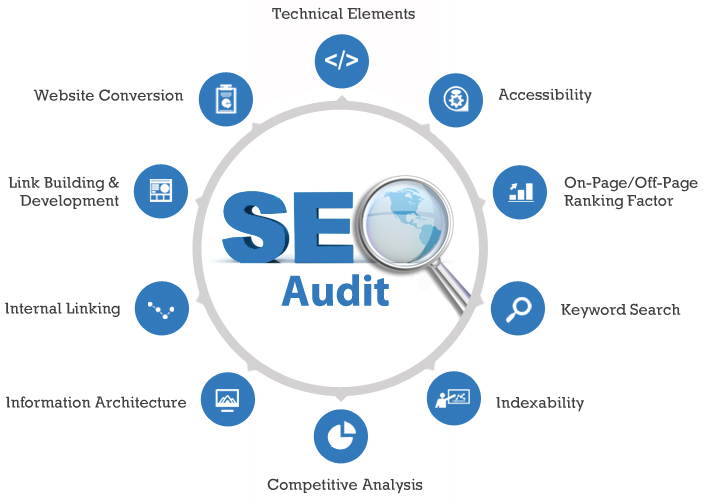Internet marketing strategy
Strategy without tactics is the slowest path to victory.
Tactics without strategy is just vanity before defeat.
Sun Tzu.

Holistic marketing involves yourself:
')
In order to clearly develop a strategy, you need to clearly understand what path our client follows, how he lives. Traditionally, internet marketers say they have a sales funnel and it all comes down to it. It remains only to digitize its sales funnel and that's it. In fact, before the sales funnel and after, there are several stages. Let us examine this in more detail.

In order to correctly build this path, we need to build an e-marketing system in the company. That's all about internet marketing:
What to do?
Setting goals for Internet marketing company.
The goal of email marketing is growing out of marketing strategies, which in turn grow out of business strategy development goals.
There is a different set of divisions in the development of marketing strategies. Consider the most classic "Michael Porter Marketing Strategies."

Porter’s model states that there are 3 types of strategies:
Differentiation strategy - creating a unique product in the industry. It is very difficult, almost impossible to make a unique thing. Maybe, but most people can't do it.
Cost leadership strategy - the company achieving the lowest possible level of costs and creating the best price for the client. It is necessary to pre-calculate at the expense of what, this price will be the lowest: due to the automation of the business, due to the hiring of low-skilled employees, due to cheap procurement, etc.
Focusing strategy - the choice of a narrow niche and work only in it. It is quite popular when we choose a certain niche, a certain segment and work only in it.
Based on this strategy, signs everything step by step, for example:

Company's mission
The mission of Aviacarrier is to provide safe and profitable air transportation of passengers and cargo.
Strategic goals
Targets
Company objectives
Actions:
It is necessary to segment the target audience in which we are going to work or are already working in order to understand how to “sharpen” our product for them, how to form a unique selling proposition, build our company's positioning and which advertising channels we can use.
The traditional three-step process:
We identify the segmentation criterion, analyze the customer base, forecast the size of the market and determine which segment we want to work with, and form a unique selling proposition for them.
There are various types of segmentation: geographic, socio-demographic, behavioral, psychographic, B2B segmentation.
In order to understand correctly or not, the customer base has been segmented, there is a test item:
For example , we sell medical equipment - a cosmetic trolley that allows you to solve skin problems, skin stretch marks, burns, improve skin elasticity, etc. The cost of the order of 300 thousand euros. There are several target audiences, final consumers are women after childbirth, women who have drastically lost weight, men are extreme lovers, who have scars, etc., etc.

The second target audience is physicians - beauticians, who will work for this equipment. They are interested in the fact that four different devices are built into this equipment, the fact that they have a customizable length of the laser beam, which allows to solve skin problems.

The third segment is the owners of medical clinics, whose main task is to make money, so for them we pack the product and it turns out that the payback period is such and such, with such and such client flow. You do not need a large area for this equipment, you do not need systems for diagnostics, and accordingly wages and rent will be paid less, and the capacity will increase.
Consequently, the product is one, but different segments of the target audience and needs are respectively different.
For this we are preparing a website, with different pages, for each segment of the target audience. Under each segment, we run advertising with a different message.
We select segments of the target audience, from walking out of segmentation and form goals that we want to achieve, for example, to recruit 75 clients of the first segment, 25 clients of the second, for a year, we form a list of actions that should be performed on the site. And we are forming an advertising channel for them, through which we will be able to find them.

It is always more convenient to work with a typical character, this is such an average portrait, representative of the target audience.
For example , a company that manufactures steel doors, it has about 12 typical characters. That is, a certain client, with a certain problem, with a certain budget, builds up the following communication:
If we do not know the needs of the target audience, what to do?
The next item is a competitive analysis, with which we deal with positioning, with a unique offer of competitors, with pricing policies, with customer service, which promotion tools they use.

We ourselves must choose competitors from several conditions, that is, there are:
For example, if the market is already established, then there is already a company, a company leader that has existed for many years on the market, so we need to analyze its leadership strategy, how they hold this position, how to attract customers, how they work with them.
Often, there are young companies on the market that appeared two or three years ago, started to move on the Internet not so long ago, but they are very actively moving into this market, in this case it is also useful to study the strategy of this company.
Competitor Analysis
Analyzing:
We have an understanding with whom we want to work (our target audience), there is an understanding about our competitors.
Therefore, our task is to develop a unique offer for our audience, which will differ from the competitors most profitable and promote us.

There is a misconception that positioning and a unique selling proposition are one thing. Positioning is the story of how the company is generally perceived in the market. A UTP is a product of the company. Do not confuse positioning and utp!
Technical audit. Check the speed of the site, the speed of loading pages for different parameters.

SEO audit. We check the link structure of the site, whether the page is loaded correctly or not, additional checks (text spam, affiliated domains, etc.)
Usability audit Check how the script on the site is being worked out, cross-browser compatibility, whether there are blank pages on the site, when the page is under construction. Site header (logo, positioned slogan, etc.), navigation (whether all menu items are visible, no dead ends, etc.), how the forms on the site are processed (required fields, error colors, notifications, etc.) .

Audit web analytics. Access to the counter, exceptions IP-address, setting goals, events, integration with the web master, etc.).

Lead analysis. Information about client flow (sources of requests, calls, number of processing requests)
Customer path - how the target audience lives.
What should be in the strategy:
It is necessary to remember about the law Parateo

That is, we can write a strategy for 300 slides, but in fact from these 300 slides, there are 20 points that need to be done right now, in the first month, and this will give a qualitative leap in sales.
Only you decide how to work, without a plan or have a clear plan!
Tactics without strategy is just vanity before defeat.
Sun Tzu.

Holistic marketing involves yourself:
')
- External marketing: communications, product, channels.
- Relationship marketing: customers, partners, competitors.
- Internal marketing: top management, sales department, other departments.
- Social responsibility: ethics, law, society.
In order to clearly develop a strategy, you need to clearly understand what path our client follows, how he lives. Traditionally, internet marketers say they have a sales funnel and it all comes down to it. It remains only to digitize its sales funnel and that's it. In fact, before the sales funnel and after, there are several stages. Let us examine this in more detail.

In order to correctly build this path, we need to build an e-marketing system in the company. That's all about internet marketing:
- website, SEO, e-mail newsletters;
- mobile marketing: applications, mobile versions of the site;
- CRM systems: customer data;
- IP telephony;
- IT systems: Internet portals;
- End-to-end analytics: web-analytics, srm-analytics, a built-in chain that completely allows you to understand the marketing of your company.
What to do?
Setting goals for Internet marketing company.
The goal of email marketing is growing out of marketing strategies, which in turn grow out of business strategy development goals.
There is a different set of divisions in the development of marketing strategies. Consider the most classic "Michael Porter Marketing Strategies."

Porter’s model states that there are 3 types of strategies:
Differentiation strategy - creating a unique product in the industry. It is very difficult, almost impossible to make a unique thing. Maybe, but most people can't do it.
Cost leadership strategy - the company achieving the lowest possible level of costs and creating the best price for the client. It is necessary to pre-calculate at the expense of what, this price will be the lowest: due to the automation of the business, due to the hiring of low-skilled employees, due to cheap procurement, etc.
Focusing strategy - the choice of a narrow niche and work only in it. It is quite popular when we choose a certain niche, a certain segment and work only in it.
Based on this strategy, signs everything step by step, for example:

Company's mission
The mission of Aviacarrier is to provide safe and profitable air transportation of passengers and cargo.
Strategic goals
- Expansion of the market segment for transatlantic transportation; increased flight safety;
- Increasing the general and professional level of personnel training (pilots, technicians, flight attendants, managers, etc.);
- Creating a favorable social climate in the team;
- Maintaining the composition of the air fleet and ground support at a level not lower than that of competitors, etc.
Targets
- Revenue growth 1.5 times in three years
- Profitability -2,0%
- Investment volume - 3 times increase
Company objectives
- A yield of 99% indicator of the arrival of the aircraft on time;
- Creating a system of annual retraining of pilots and flight attendants;
- Annual purchase of at least 3 modern aircraft, etc.
Strategy M. Porter: "Differentiation"
Actions:
- Working with the attributes of the brand (development of corporate identity and Guideline - guidance on the use of corporate identity);
- Announcement on board in three languages;
- Salon design;
- Design of lunch boxes, branded souvenirs, etc .;
- Appearance (uniforms) of flight attendants;
- Standards of passenger service (all aspects subject to the rules of conduct);
- Interior design points of sale in the corporate style;
- Ability to choose dishes;
- Develop and implement a frequent flyer program;
- Strict and strict observance of all objective factors influencing the choice of the air carrier - punctuality of departure, aircraft status, etc. for a certain time interval of the target audience.
It is necessary to segment the target audience in which we are going to work or are already working in order to understand how to “sharpen” our product for them, how to form a unique selling proposition, build our company's positioning and which advertising channels we can use.
The traditional three-step process:
We identify the segmentation criterion, analyze the customer base, forecast the size of the market and determine which segment we want to work with, and form a unique selling proposition for them.
There are various types of segmentation: geographic, socio-demographic, behavioral, psychographic, B2B segmentation.
In order to understand correctly or not, the customer base has been segmented, there is a test item:
"Each segment of the target audience in your product sees its unique, different value"
For example , we sell medical equipment - a cosmetic trolley that allows you to solve skin problems, skin stretch marks, burns, improve skin elasticity, etc. The cost of the order of 300 thousand euros. There are several target audiences, final consumers are women after childbirth, women who have drastically lost weight, men are extreme lovers, who have scars, etc., etc.

The second target audience is physicians - beauticians, who will work for this equipment. They are interested in the fact that four different devices are built into this equipment, the fact that they have a customizable length of the laser beam, which allows to solve skin problems.

The third segment is the owners of medical clinics, whose main task is to make money, so for them we pack the product and it turns out that the payback period is such and such, with such and such client flow. You do not need a large area for this equipment, you do not need systems for diagnostics, and accordingly wages and rent will be paid less, and the capacity will increase.
Consequently, the product is one, but different segments of the target audience and needs are respectively different.
For this we are preparing a website, with different pages, for each segment of the target audience. Under each segment, we run advertising with a different message.
We select segments of the target audience, from walking out of segmentation and form goals that we want to achieve, for example, to recruit 75 clients of the first segment, 25 clients of the second, for a year, we form a list of actions that should be performed on the site. And we are forming an advertising channel for them, through which we will be able to find them.

It is always more convenient to work with a typical character, this is such an average portrait, representative of the target audience.
For example , a company that manufactures steel doors, it has about 12 typical characters. That is, a certain client, with a certain problem, with a certain budget, builds up the following communication:
If we do not know the needs of the target audience, what to do?
- Analysis of demand in search engines allows you to find a lot of specific segments, interesting premeditated things and embed it all in the site, in the product catalog structure, in advertisements, etc.
- Analysis of references to this product from competitors in social networks and viewing a portrait of people who are interested in it.
- Conducting surveys on thematic resources or using Internet questionnaires.
- Order research in marketing agencies.
- Buying ready-made research.
- Analysis of own client database.
The next item is a competitive analysis, with which we deal with positioning, with a unique offer of competitors, with pricing policies, with customer service, which promotion tools they use.

We ourselves must choose competitors from several conditions, that is, there are:
- direct competitors - all competitors that are concentrated in one city;
- indirect - they realize the same need of the client, only with a different product;
- overseas companies - if high-tech startup, hosting you can look at a lot of information on foreign resources, but do not forget about the stage of development of the company.
For example, if the market is already established, then there is already a company, a company leader that has existed for many years on the market, so we need to analyze its leadership strategy, how they hold this position, how to attract customers, how they work with them.
Often, there are young companies on the market that appeared two or three years ago, started to move on the Internet not so long ago, but they are very actively moving into this market, in this case it is also useful to study the strategy of this company.
Competitor Analysis
Analyzing:
- how much the site is designed in terms of usability,
- What mechanisms are the content types used on the site?
- how leads are captured (telephone, order form, feedback form, callback order, online consultant),
- what trust elements are present (photos of employees, customer reviews, diplomas, letters of recommendation, photos of offices, photos of objects, etc.), integration with external services, all this needs to be studied.
We have an understanding with whom we want to work (our target audience), there is an understanding about our competitors.
Therefore, our task is to develop a unique offer for our audience, which will differ from the competitors most profitable and promote us.

There is a misconception that positioning and a unique selling proposition are one thing. Positioning is the story of how the company is generally perceived in the market. A UTP is a product of the company. Do not confuse positioning and utp!
Audit of current electrical marketing
Technical audit. Check the speed of the site, the speed of loading pages for different parameters.

SEO audit. We check the link structure of the site, whether the page is loaded correctly or not, additional checks (text spam, affiliated domains, etc.)
Usability audit Check how the script on the site is being worked out, cross-browser compatibility, whether there are blank pages on the site, when the page is under construction. Site header (logo, positioned slogan, etc.), navigation (whether all menu items are visible, no dead ends, etc.), how the forms on the site are processed (required fields, error colors, notifications, etc.) .

Audit web analytics. Access to the counter, exceptions IP-address, setting goals, events, integration with the web master, etc.).

Lead analysis. Information about client flow (sources of requests, calls, number of processing requests)
Client path and strategy
Customer path - how the target audience lives.
- Step 1. Step formation needs. At this step, the client lives with some unsolved problem, but he still does not know that he has problems and an unsolved problem, he is satisfied with the current product and he does not know that there is a new version of this product. Our task is to “sow a seed”, so that the client starts thinking about what he needs, to change something. For this we use special projects, contests, viral videos, tests, affiliate marketing, our own information portal / blog.
- Step 2. Step search for solutions. Our task is for the client to think that he has a problem and it needs to be solved. At this step - above give the client an answer, show our expertise and get a contact!

B2B research works very well on a specific topic. Useful articles, books, webinars, videos and training manuals, in the format than one product differs from another. And we build contact points so that the client subscribes to the newsletter, a group on social networks, etc. All where we can cling to the client. But in no case are we trying to sell something to the client at this stage, since at this stage he is only studying the goods. - Step 3. Collect information. At this step, we must show that we are better suited to the client’s tasks! Sophisticated quality content on the site (photos, illustrations, benefits, cost calculations, benefits, additional materials). Capturing competitive traffic, using an information portal, using advertising on brands of competitors, advertising in social networks. At this step, we are trying to delay those people who already have a demand, the need for this product.
What should be in the strategy:
- Description of the business model of the company;
- Business goals;
- Segmentation of the target audience;
- Conclusions on competitive analysis that we can copy to ourselves;
- Conclusions on the audit of the current Internet marketing, what needs to be corrected, what should be done;
- Description of tools and channels for each segment path, for each target audit.
It is necessary to remember about the law Parateo

20% of efforts give 80% of the result, and the remaining 80% of efforts - only 20% of the result
That is, we can write a strategy for 300 slides, but in fact from these 300 slides, there are 20 points that need to be done right now, in the first month, and this will give a qualitative leap in sales.
Only you decide how to work, without a plan or have a clear plan!
Source: https://habr.com/ru/post/323484/
All Articles